With or without braces, flossing is an important part of your overall oral health routine.
Only 30% of adults floss – and that’s without braces. Another survey found that only 13% of teenagers floss their teeth, and 44% say they never or rarely floss!
While flossing with braces may seem tricky, it’s an important part of maintaining your oral health.
Flossing daily prevents bacteria buildup on your teeth, which can cause cavities and tooth decay. Daily brushing only removes some of these harmful residues — flossing is the extra oomph you need to keep your teeth clean and avoid cavities down the line.
You may be wondering how exactly you can floss with braces. It can be tricky because the brackets hold wires between your teeth, making it difficult to pull down on floss from either side of a tooth.
That’s why we’ve put together these flossing methods, including using tools like floss threaders to make flossing easy, so you can protect your braces and your oral health at the same time.
Why is Flossing with Braces Important?
Brushing twice a day for two minutes each time is one of the most important ways to take care of your oral health so you have healthy, white teeth when those braces come off. But if you’re skipping out on flossing, you’re skipping out on a big piece of your overall oral health.
Flossing regularly is especially important with braces, since food particles can get trapped in the wires and brackets, which can lead to tooth decay. Tooth decay can lead to cavities, which can be expensive to treat. And when left untreated, cavities can lead to gingivitis.
Gingivitis is an inflammation of your gums, which can cause pain and discomfort, especially while eating. And if left untreated, the infection can spread to your jaw, and even lead to losing teeth.
When you don’t floss with braces, your gums may become more sensitive if there’s a buildup of bacteria on your teeth and gums. That’s why unhealthy gums can bleed more easily whenever you floss.
Healthy gums will allow your teeth to move into place easier, resulting in more efficient and effective results from your braces. And with a regular flossing routine, your gums should become more used to flossing, and the bleeding should start to go away.
Contact your dentist or orthodontist if you notice your gums bleeding even when you’re not flossing.
How to Floss with Braces
Braces have a lot of nooks and crannies to navigate, and countless areas where food can get trapped. Taking the time to floss thoroughly will help keep your teeth and gums healthy and less susceptible to pain from tooth decay.
The wires that move your teeth tend to catch lots of food and bacteria, making it vital to keep up with healthy habits.
1. Use Enough Floss
Set yourself up for success by using a long enough piece of floss so you can wrap it around your fingers a few times. Around 18 to 24 inches of floss should be plenty.
The best dental floss for braces is waxed floss, since unwaxed floss can get caught in your brackets more easily.
2. Thread Carefully
Gently guide the floss under the wire for each section between your teeth. There are a few different ways to hold the floss once it is in position above the teeth, but wrapping the floss around your thumb a few times is the easiest and sturdiest way.
It may seem tedious to work around the wire, but it won’t take long to get a feel for it — and it’s worth it.
3. Be Firm But Gentle
While you want to be sure to effectively floss between each tooth, try to avoid flossing too hard and agitating your gums — or even ripping or snapping the floss.
Floss that rips or tears not only can be painful on your sore teeth, but can cause damage to your wires and brackets.
Damaging any element of your braces can be uncomfortable and seriously impact the efficacy of your braces. It’s important to schedule a visit to your orthodontist as soon as possible after damage to your braces so that no major damage occurs that can’t be reversed.
4. Don’t Forget the Back!
It’s easy to neglect your molars or wisdom teeth (if you still have them) when brushing or flossing. But making sure to floss between these back teeth is an important step to remember, even without braces!
Tools for Flossing With Braces
Flossing doesn’t have to feel like an extra chore or take a lot of extra time. These tools can help you floss more efficiently and easily with braces.
Waterpik Flosser, Oral Irrigator, or Water Flosser
These flossing tools use a steady stream of water to clean between your teeth and around your gums, making hard-to-reach areas easier to clean. There are both stationary models and smaller, portable ones.
With braces, these can be a lifesaver because it can painlessly remove leftover food and doesn’t involve the same time commitment as flossing.
Floss Threaders
- The process of threading floss under each wire of your braces can be tricky.
- A floss threader is a flexible piece of plastic with a large loop where the floss is threaded (much like a sewing needle holding thread) that can be directed under the wire with much more precision and ease.
- Floss threaders can be found at most pharmacies and grocery stores.
Dental Tape
- Dental tape is wider and flatter than floss, making it easier to get a grip on the floss without it slipping between your fingers.
- Dental tape comes in both waxed and unwaxed versions.
- People with wider gaps between their teeth are often more inclined to use dental tape, but it still works perfectly well with more narrow gaps.
More Tips for Keeping Your Braces Clean
Brushing and flossing are great methods for your general health. These tips can help you make your oral routine the absolute best it can be.
Try an Electric Toothbrush
Electric toothbrushes are more effective at removing bacteria buildup than manual brushes. They’re especially great for people with braces, as they can more easily navigate around your brackets and wires.
Many even have extra functionality like pulsating features, timers that let you know when to move on to the next section of your mouth, and pressure sensors so that you never brush too aggressively and risk damaging your braces.
Check in with Your Orthodontist
With braces, you should already be seeing your orthodontist regularly for adjustments and check-ins. You should also already be visiting your dentist for cleanings twice a year.
These professionals are here to help you, and they have the experience and knowledge to spot problems in your teeth and help fix those problems.
By incorporating a daily flossing routine into your oral health regiment, you can look forward to a bright, healthy smile when your braces come off.
But it’s not just flossing and brushing that protects your teeth. Eating the right foods is another important way to take care of your braces, and to keep food from getting stuck in your brackets (which can cause tooth decay, or even damage your braces!)
That includes avoiding crunchy fruits like apples, chips and crackers, sticky foods and candy. Replacing these snacks with other delicious treats like berries, yogurt, and more can do your teeth and body a world of good.
Discover which foods are best to eat (and what to avoid) with braces >

